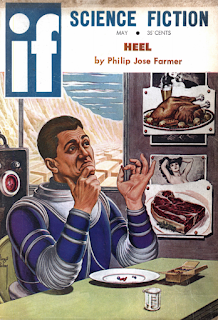As a teenager, Paul Allen was a sci-fi and rocketry nerd. He dreamed of becoming an astronaut, but that ambition was scuttled by nearsightedness. His childhood bedroom was filled with science fiction and space books. Bill Gates remembers Allen’s obsession. “Even when I first met him—he was in tenth grade and I was in eighth—he had read way more science fiction than anyone else,” says Gates, who later founded Microsoft with Allen. “Way more.” One of Allen’s favorites was a popular science classic called Rockets, Missiles, and Space Travel, by Willy Ley, first published in 1944. As Allen tells it in his memoir, he was crushed when he visited his parents as an adult and went to his old room to reference a book. He discovered that his mother had sold his collection. (The sale price: $75.) Using a blowup of an old photo of the room, Allen dispatched scouts to painstakingly re-create his boyhood library.
You have here a fantastically wealthy man going to great lengths to recapture childhood dreams. As we've mentioned before and will delve into in greater depth in the future, Silicon Valley futurism is heavily (and I would argue not at all healthily) influenced and bounded by the tropes, rhetoric, and imagery of postwar science-fiction.
Here, the relationship becomes especially obvious when one goes back and studies the probable contents of Allen's boyhood room. Being obsessed with science fiction and a devoted reader of Ley, there was likely a collection of Galaxy Magazines on one of the shelves at some point. There was possibly even a lovingly assembled set of monograms Willy Ley space models hanging from the ceiling.
>.
When you look at the massive aircraft that Allen's company has just introduced and then look at the pictures and stories he obsessed over as a child, it is difficult to avoid the conclusion that, in a very real sense, he has spent millions upon millions of dollars constructing a life-sized version of the childhood toy.
This is not to say that the approach isn't viable or that the business model is necessarily bad. Air launches are a well established technology and while this proposal does not represent a huge leap forward in low-cost space travel, the suggested economies of scale certainly seem reasonable. God knows we've seen worse business plans recently.
But given the extraordinary role that Silicon Valley culture plays in society and the nearly unchecked power that the super rich wield in the new gilded age, we need to recognize how old most of these ideas are and ask ourselves why aren't we seeing more new ones.




No comments:
Post a Comment